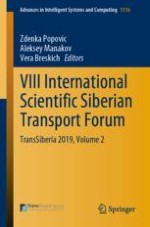This book presents the findings of scientific studies on the successful operation of complex transport infrastructures in regions with extreme climatic and geographical conditions.
It features the proceedings of the VIII International Scientific Siberian Transport Forum, TransSiberia 2019, which was held in Novosibirsk, Russia, on May 22–27, 2019.
The book discusses improving energy efficiency in the transportation sector and the use of artificial intelligence in transport, highlighting a range of topics, such as freight and logistics, freeway traffic modelling and control, intelligent transport systems and smart mobility, transport data and transport models, highway and railway construction and trucking on the Siberian ice roads.
Consisting of 214 high-quality papers on a wide range of issues, these proceedings appeal to scientists, engineers, managers in the transport sector, and anyone involved in the construction and operation of transport infrastructure facilities.
